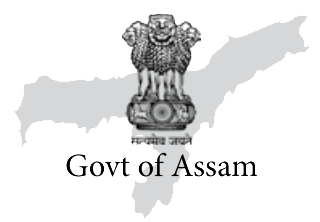About 35 km north-west of Jorhat town, the district headquarter one of the most important districts in upper Assam is Bahir–Kaliya Gaon, a village populated mostly by the Mishings. Adjacent to a dead stream of mighty Brahmaputra, this village has been witnessing a spurt of commercial tree plantations by locals under the aegis of Makhan Gattani, a prominent businessman of Jorhat district.
Locals say low lying areas in vast plains along the bank of mighty Brahmaputra in Jorhat district are suited for both ‘Bur flower-tree’, known as Kadam tree and ‘Bombax ceiba’ known as Simalu tree.

Bhimlal Pegu (52), a close aide of Gattani, under whose guidance saplings of Kadam and Simalu tree have been planted in unused agricultural lands in Bahir Kaliya Gaon and its adjoining villages drives home the ground work done to spread the idea.
“We have convinced villagers whose lands are unused for years to plant trees which have commercial value. Initially, we faced resistance from villagers on the idea of using their land for plantation. Later, they agreed to a benefit sharing formula wherein we pay for plantations and care. Once the tree is fully grown and fit for commercial use, the landowner will get 40% of the total market value of the tree. We generally replant after felling the first batch of trees,” said Bhimlal.
At Bahir Kaliya Gaon, Babu Saheb Tayung, one of the elderly persons in the village, allowed plantation in 25 bighas of his land. “We have planted Kadam and Simalu saplings. There is enough sunlight and space for saplings here,” said Pranjal Pegu, the caretaker of the plantation site.
Bhimlal said that bamboo fencing around the plantation is a must for the first two years of plantation to save the saplings from domesticated straying cows and buffaloes.
“At Janjhi Mukh in Teok in Jorhat, locals have offered 100 bighas of land. At Kalbari area, a few kilometres ahead of Bahir Kaliya Gaon, 300 bighas of private land will be brought under Kadam and Simalu tree plantation.”
A kilometre west of Bahir Kaliya Gaon is Bahir Roumora village. Taking a cue from the nearby village, some villagers have started a similar initiative in their courtyards-cum-unused horticulture lands. “Bahir Kaliya Gaon commercial tree plantation is an eye opener for us. I have three hundred Simalu in my unused land. I expect dividends in six to seven years from now when these trees become mature and fit for commercial use,” said Atul Saikia, a villager.
At Baghmora village, which is adjacent to the route of a stream of Brahmaputra River, Jiten Doley (50) started commercial tree plantation under the same initiative. “I planted saplings three years ago with full cooperation from Makhan Babu. He gave me about two thousand saplings free, bore all related expenses and we agreed on a profit sharing formula from this plantation,” Doley said.
“Besides profits, the very idea of plantation helps counter erosion along the banks of Brahmaputra, and counter the impact of climate change,” says Gattani while stating that these trees act as ideal foil for the plywood industry.
Gattani, the managing director of Gattani Industries, which is one the prominent producers of plywood in India, and leading manufacturer in North East India, recollected the history of how a once booming plywood industry fell by the wayside in 1996 after a Supreme Court judgement.
“The industry of Assam was severely affected by the SC verdict. Before this development, Assam was the leader in plywood industries in the country. After the verdict, Haryana became the leader. Haryana has started commercial tree plantation for this industry. With the Assam Government’s new move for tree plantation in private land, we see good days ahead,” said Gattani.













